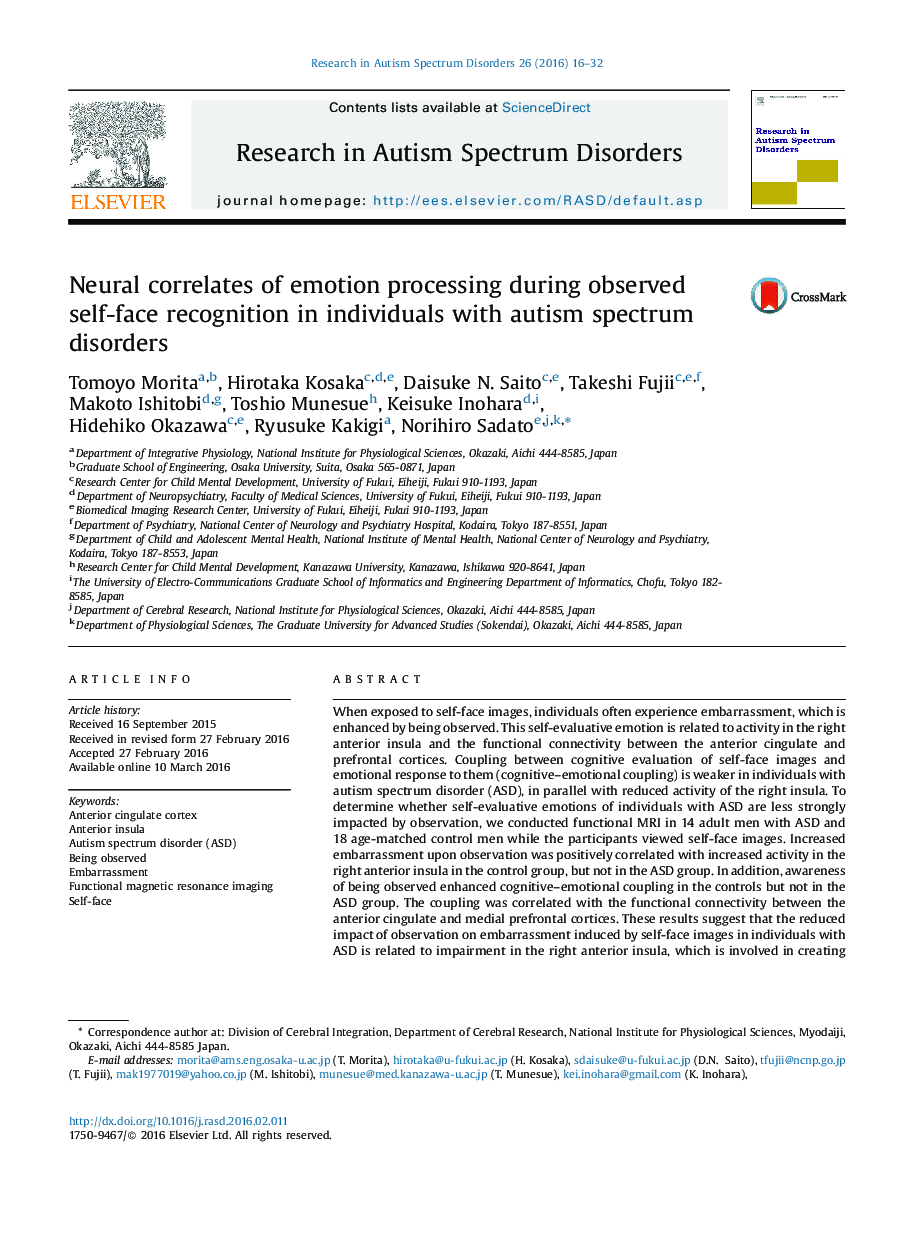| Article ID | Journal | Published Year | Pages | File Type |
|---|---|---|---|---|
| 369951 | Research in Autism Spectrum Disorders | 2016 | 17 Pages |
•We investigated the effects of being observed on embarrassment in individuals with ASD.•Brain activity was measured as participants viewed self-face images with or without an observer.•Awareness of being observed enhanced embarrassment without affecting right AI activity.•Functional connectivity between ACC and MPFC was not enhanced by being observed.•Individuals with ASD have impairments in evaluating the self in relation to others.
When exposed to self-face images, individuals often experience embarrassment, which is enhanced by being observed. This self-evaluative emotion is related to activity in the right anterior insula and the functional connectivity between the anterior cingulate and prefrontal cortices. Coupling between cognitive evaluation of self-face images and emotional response to them (cognitive–emotional coupling) is weaker in individuals with autism spectrum disorder (ASD), in parallel with reduced activity of the right insula. To determine whether self-evaluative emotions of individuals with ASD are less strongly impacted by observation, we conducted functional MRI in 14 adult men with ASD and 18 age-matched control men while the participants viewed self-face images. Increased embarrassment upon observation was positively correlated with increased activity in the right anterior insula in the control group, but not in the ASD group. In addition, awareness of being observed enhanced cognitive–emotional coupling in the controls but not in the ASD group. The coupling was correlated with the functional connectivity between the anterior cingulate and medial prefrontal cortices. These results suggest that the reduced impact of observation on embarrassment induced by self-face images in individuals with ASD is related to impairment in the right anterior insula, which is involved in creating subjective feelings, and the anterior cingulate cortex, which acts as a hub for integrating information from others during self-face evaluation.
